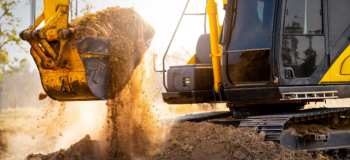11/02/2025
Insights
What are the benefits of a circular economy?
The circular economy is a model of production and consumption that eliminates waste by reusing, repairing and recycling materials and products. It’s widely accepted as one of the most compelling solutions to the sustainability challenges we face.
Currently, most organisations operate a take-make-consume-waste linear economic model, which is designed to create products in the cheapest and most efficient way. The circular economy, on the other hand, prioritises the sustainable use of natural resources to eliminate waste and pollution. Although the circular economy requires an initial investment to adapt production methods and supply chains, it has long-term benefits for the environment, consumers and businesses.
Here we cover some of the basics, discuss the circular economy benefits and look at a few examples of the circular economy in practice.
What is a circular economy?
The circular economy is a method of producing and consuming goods that reduces their impact on the natural world. Through sustainable design and production methods, everything that’s produced, and the by-products, are reused to minimise waste, raw material use and emissions.
The World Economic Forum describes the circular economy as: ‘an industrial system that is restorative or regenerative by intention and design’.
There are several stages involved in this process:
- Designing out waste and pollution
Organisations must restructure their production processes to design out activities that negatively impact the environment and human health.
- Reusing products and materials
The circular economy promotes the reuse, repair and refurbishment of products rather than creating goods that can be used and thrown away. When products reach their end of life, the raw materials are kept in the economy through recycling.
- Regenerating living systems
Rather than using finite resources, the circular economy aims to actively improve the environment by preserving and enhancing renewable energy resources and returning valuable nutrients to the soil.
Circular economy examples in action
Transitioning to the circular economy is not easy. It requires companies to overhaul their existing supply chains, business models and customer relationships. However, there are many examples of organisations overcoming these challenges and taking concerted steps in the right direction.
One way construction companies are adopting the circular economy is by using timber as their primary structural material. It produces zero waste, involves less energy-intensive production processes and creates a long-term carbon-capture solution. Passivhaus design and construction is another example. It utilises renewable materials, optimises resource efficiency and is designed for a decarbonised grid.
The circular economy also presents opportunities for the food and beverage industry. Producers are switching to sustainable sourcing methods, reducing energy consumption and water use in their production processes and creating sustainable packaging solutions. Reducing food waste is another industry challenge that some firms are tackling by using biowaste to improve soil quality.
The benefits of the circular economy
There are many benefits associated with a production model where nothing is wasted and natural resources are used sustainably from the concept stage to end use. They include:
Protecting the environment
Recycling and reusing products and components reduces the use of natural resources, slows the rate of landscape and habit destruction and minimises harmful emissions. The circular economy can also improve soil and land health and enhance its value as an asset.
Reducing our dependence on raw materials
Using fewer virgin materials during production reduces the demand for raw materials. Recycling and reusing raw materials also reduces the risks associated with their supply, such as availability and price volatility.
Reducing costs for businesses
Reusing components and repairing products enables businesses to improve resource efficiency by extracting more value from their assets and materials. There are also lower costs associated with waste management and the potential to generate new profit streams.
Creating jobs and saving consumers money
The circular economy inspires innovation, generates new market opportunities and creates jobs in recycling, repair and other sustainable industries. Consumers also benefit from products they can repair rather than replace to reduce the cost of ownership.
Is it time to join the circular economy?
At Eddisons, we provide asset sales and decarbonisation services to help you join the circular economy. Through the auction process we improve sustainability and boost outcomes for business owners and individuals who require to sell their assets which may have been disposed-of alternatively. Get in touch to arrange a free consultation and start the process.
Get in touch with the Eddisons team
Please contact us for more details and information











